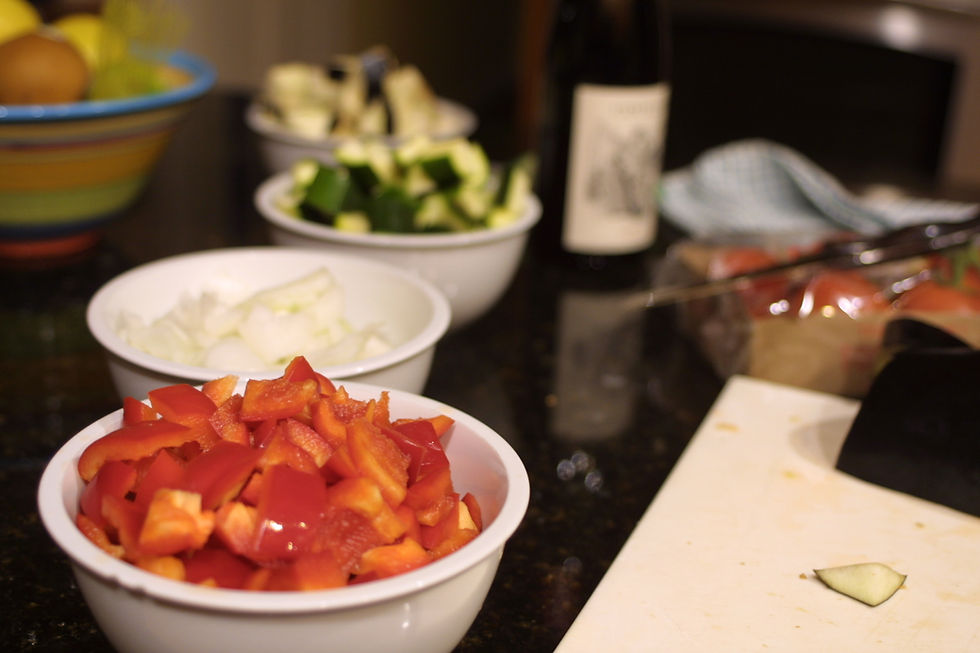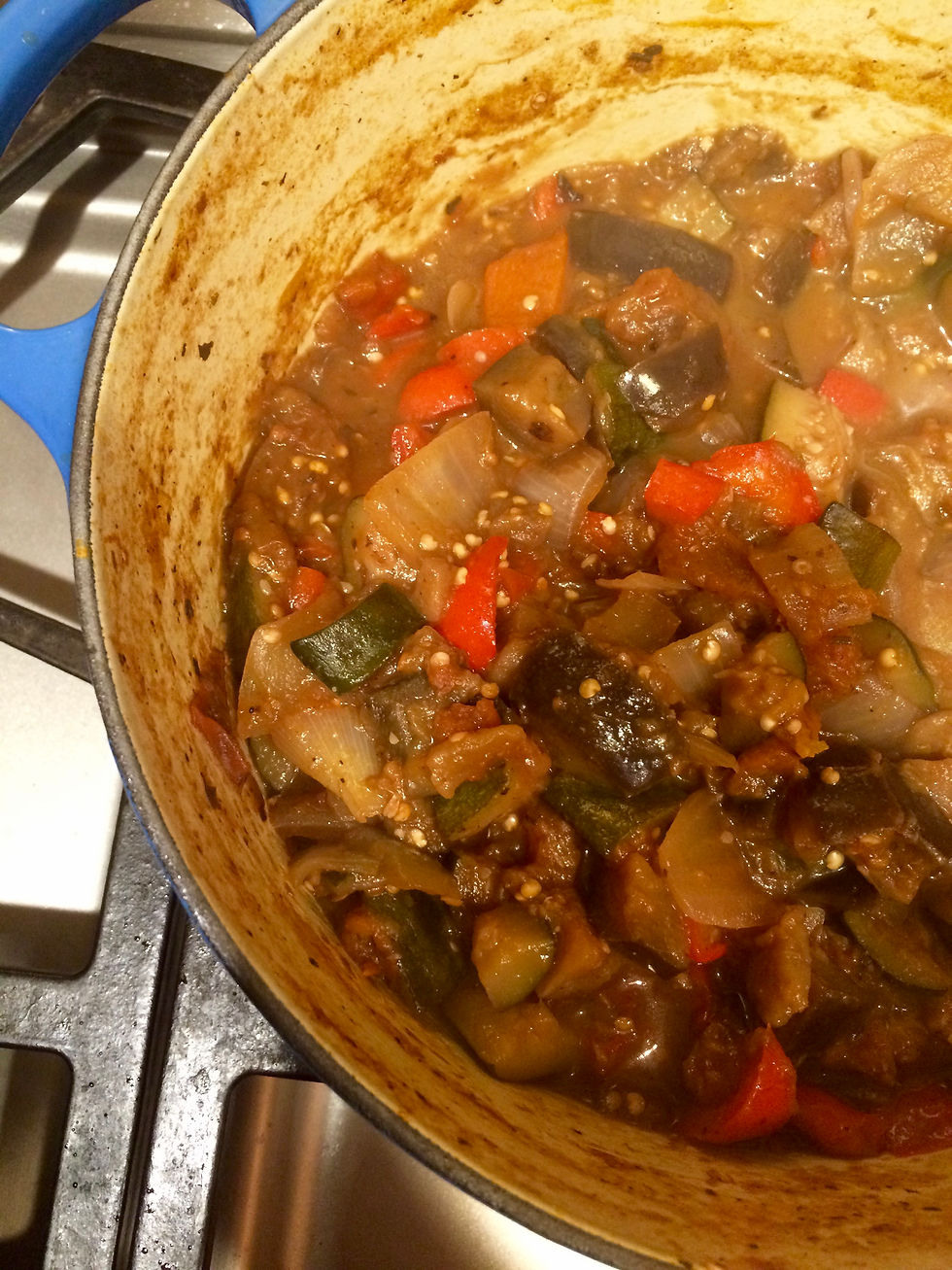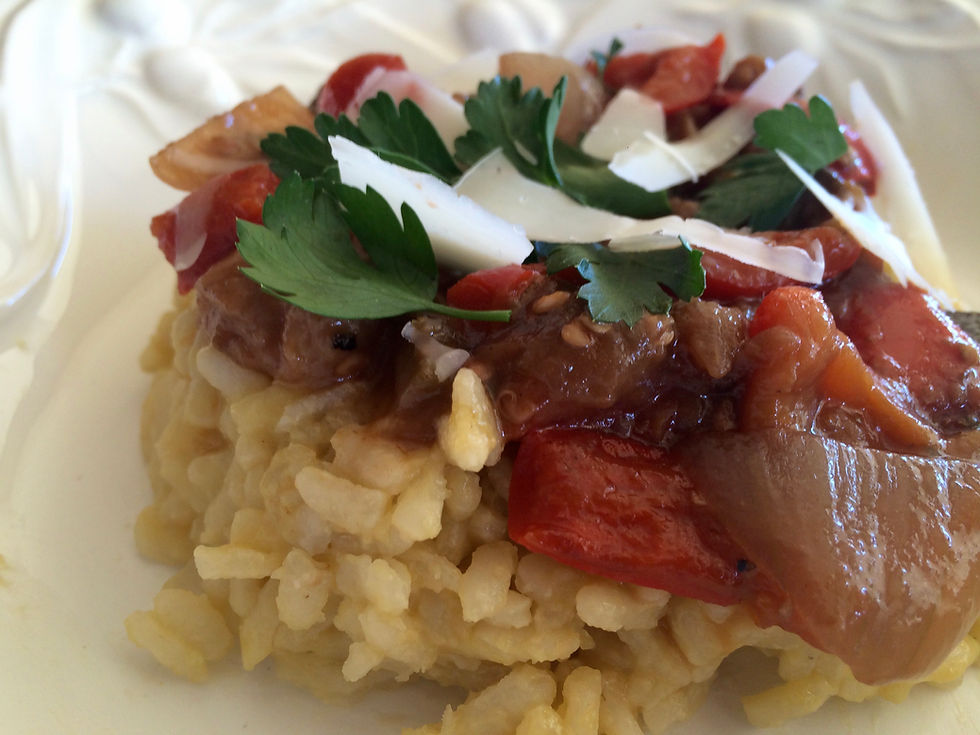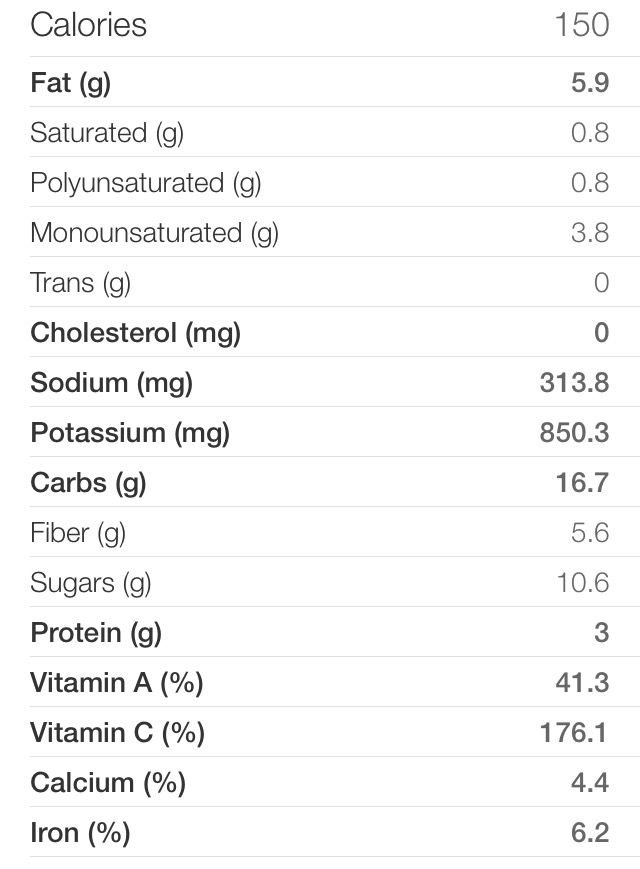Happy New Year! Okay, okay, I know I’m a little late… but it’s only the second week of January, which means it isn’t too late to talk about New Year’s Resolutions, is it? Does anyone still write them down? This year my family broke out the old resolutions we had written (I think the oldest was 1998, when I was 4) and had a laugh about all the crazy things we had hoped and planned to do in a year. Some of my favorites: in 2003, my mom wanted to “learn the internet;” my brother for years and years was determined to “build a boat;" and in 1999 I wanted to “be nice to all animals” and “get more crayons.” If you don’t already write down New Year’s Resolutions each year, you should start, if only for a few laughs down the road.

When people write resolutions, they almost always include something about health: losing weight, eating healthier, exercising more, etc. It seems we all have an intention to live more healthily, but very few of us actually stick with it. (Is it any wonder that the gym is packed in January, and back to normal by the time March rolls around?) Thinking about resolutions - at the beginning of the year or any time- is an important first step of labeling your intentions. When it comes to healthy intentions, the goal is to form a healthy habit. The instinctive component of a habit makes exercise and healthy eating easier and more automatic. So how do we form habits? We do the same thing over and over until it becomes natural… and there is evidence that it takes about 2 months. (You might have heard that 3 weeks is the magic number for habit forming, but this is probably only a minimum).
It can be hard to do this, however, and this is where planning comes in. When thinking of what you would like to focus on in 2016, keep these tips in mind:
1. The intention should be maintainable: you are probably not going to stick with a 1-hour gym session each day, especially when things come up in your schedule, such as travel or work. Choose something that you know you can continue (with the goal of continuing for your entire life). Strength-training at least twice a week? You can manage that.
2. The intention should not be too easy, but it should not be too hard either: Don’t think you will develop rock-hard abs if you do 10 sit-ups a day; it will become too easy after a while (though starting at 10 a day is perfectly fine, as long as you intend to increase the number). And if you hardly eat any vegetables now, don’t tell yourself you plan to eat 8 servings every day. If you make the resolution too difficult, you won’t stick with it. If it’s too easy, you won’t see results*. Think of my “get more crayons” resolution: completing my intention doesn’t change me for the better in any way (granted, I was 5, but the point remains).
3. The intention should be measurable: but not by a scale. You don’t need to weigh yourself every day to know you feel good. If you come up with a plan to “eat less dessert,” you won’t, because the goal is not specific enough. When your resolution is specific, it actually makes it easier to stick with. For example, change “eat less dessert” to “eat fruit instead of dessert.”
4. Work the intention into your schedule; in other words, plan it out. This is the most important aspect of any resolution. How are you going to execute it?

There you have it. Your intention should be maintainable, medium difficulty (for you, wherever you are in your health journey), measurable, and planned.
One year, my resolutions was to “eat three servings of vegetables a day.” This was maintainable because I could eat one serving for breakfast, lunch and dinner, and check off my success for the day. It was medium difficulty for me at the time; I wasn’t eating many vegetables, and I knew added at least one serving to each meal wouldn’t be too difficult. It was measurable, of course (I actually checked off each day in a planner, and the thought of missing a day after weeks of checks helped to motivate me each day). The intention was well planned because I knew I could work in vegetables to my breakfast: often eggs or a smoothie; my lunch: a salad, a side of sweet potato , or carrots and hummus; and dinner: this was the easiest because I generally included a veggie for dinner anyway. Once I made that intention and stuck with it for a while, it became so much easier to incorporate into my daily cooking (and I also got more creative with vegetables along the way).
Often we lack self-efficacy, which is necessary to living healthily. For this reason, try to makes things as easy as possible by making your environment work for you. We live in an obesogenic America, where food is everywhere, in large portions, laden with excess sugar and fat. If you are constantly struggling against this, your willpower will have to work extra hard; it’s not an unlimited resource, and by the end of the day you may feel defeated. So try to change your environment so you don’t have to test your willpower as often. If you have an intention to exercise more, for example, lay out your workout clothes the night before so you see them in the morning. Find a type of exercise you actually enjoy and will look forward to: biking, a group fitness class, or a youtube video workout. If you want to eat healthier, just don’t buy the unhealthy food. If you don’t have it around, you can’t eat it. And if you aren’t hungry enough for a piece of fruit, for example, you aren’t actually hungry. By making your environment work for you, you’ll be one of the people this year who stick with their New Year’s resolutions past February.

I do hope you make some good intentions this 2016! To help you out with a heathy eating intention, here is a wonderful dish I learned to make this summer in Switzerland. (Shout out to my friend Melissa for teaching me!) Ratatouille is a wonderfully warm vegetable stew for winter, and it is chock-full of vegetables with a little healthy fat. The ingredients are simple, and the recipe doesn’t take much work. The hardest part is waiting to eat it! Enjoy!
*I’m using the word “results” very loosely. Results are not always (and should not always be) appearance based; they could be a better mood, higher self-esteem, or just the knowledge that you are eating and living more healthily.

Ratatouille
Serves 8
Ingredients
Olive oil
3-5 cloves of garlic, minced (depending on personal preference)
herbes de Provence
Salt and pepper
1 medium to large onion, chopped
3 medium red peppers, chopped
1 eggplant, diced
3-4 medium zucchini, diced
5 medium tomatoes (or 3 large), chopped
1.5 cups red wine (don’t cook with a wine you wouldn’t drink on it’s own!)
Parmesan or (my personal favorite) Manchebo, for topping
Directions
1. Heat 2 teaspoons olive oil over medium high heat in a dutch oven or large pot. Sauté onions, garlic, a dash of herbes de Provence, and a dash of salt and pepper for about 5 minutes, until cooked through and slightly brown. Remove onions; set aside.
2. If necessary, add 2 teaspoons more oil. Saute red peppers with salt, pepper, and herbes for about 5 minutes until soft. Remove peppers and set aside (you can place them in the same bowl as the onions).
3. Continue to cook the remaining vegetables in this way, adding salt, pepper, and herbes each time, and 2 teaspoons more oil if necessary. Cook eggplant for 4 minutes until browned, zucchini for 3-4 until browned, and tomatoes for 4 minutes. When tomatoes are done, add all vegetables back into the pot. (Your only goal here is to not burn any vegetables).
4. Add red wine and turn heat down to low. Let simmer for at least an hour, until the vegetables have cooked down and the wine has evaporated into a thick sauce.
5. While the ratatouille is cooking, prepare a base for the meal (and meat to top it if you would like). I prefer the ratatouille over rice or risotto with shrimp (below). It is also good over polenta or mashed potatoes, and you can add pork, grilled chicken, or eat it without meat.
6. Spoon ratatouille over base and sprinkle with cheese, if desired (and definitely recommended).
With shrimp:
Add 2 tablespoons olive oil, juice and zest of one lemon, one teaspoon minced garlic, and about 10 large basil leaves to a food processor or blender. Blend until smooth. Add to shrimp with salt and pepper; sauté in a large skillet (don't overcrowd the pan). Let shrimp cook on first side for about 2-3 minutes until pink and curled on that side; flip and cook for another 2 minutes. Serve immediately.
Nutritional Information for ratatouille only:




Comments